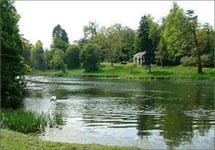Learning walks are ‘one of my things’ and I am pleased to say that regular walking with peers is part of office culture now. Charmaine Myers is one of my team and we have come to value walks as the perfect place for appraisal meetings or to just explore complex ideas and problems as I have discussed previously.
The following post is written by Charmaine who was invited to Bath Spa to share her excellent practice with colleagues there.

In Higher Education, we’re mindful that curriculum design isn’t always a walk in the park and after 10 years of supporting the concept of authentic learning principles and their application to curriculum design I’m all too aware of the challenges. So, when I was contacted by colleague, Deborah Bowe at Bath Spa University, who had the task of designing a new module in which students would work on authentic live client projects, I wanted to support her as much as I could and help her to avoid some of the errors and pitfalls that I’d experienced, especially developing the Venture Matrix.
During my visit to Bath Spa we spent a good few hours in a classroom, where Deborah shared her great ideas and aspirations for what would be a pivotal module for her School. I helped to guide Deborah through her thought process by doing the usual -challenging her and asking incisive questions.
At some point during this long discussion, I stood up to stretch my legs and noticed the beautiful view of a small lake in the centre of the campus from the classroom window. The stunning sight gave me the inspiration that I think we both needed. At that moment, I recalled that a few months previously I had taken a stroll in the woods in Sheffield to do some future planning with a senior colleague. The experience of being outdoors had really helped to inspire and formulate my plans.
So, I suggested that we take a walk. Once we were outside and walking around the lake, I used physical features such as trees, gates and other types of vegetation to guide our discussion. We focussed on a particular challenge of the design process that Deborah had identified and, between features, we used the time to examine particular solutions. I felt that the space really helped to gain some clarity.
Deborah’s own reflection would also suggest that it was a useful process:
“We’d spent 2-3 hours talking about various aspects of the module development and things I need to consider. However, they seemed to be in my head and not in any useful order. I couldn’t see a clear path before me. On walking around the lake during the mentoring session with Charmaine it opened a series of windows in my head – that is the only way I can describe it. Once opened, I could see the view and the footpaths available. This felt like some magic spell that Charmaine put on me…..literally, that is the way it felt. The result was a structure plan to move the module design forward.”
So, next time curriculum design isn’t feeling like a walk in the park, get out there and take a literal walk in the park, garden or around the lake if you are lucky enough to have one on your campus!
Thanks to Charmaine and Deborah
Charmaine Myers is Senior Lecturer Academic Developer & Lead for Venture Matrix, Sheffield Hallam University.
Deborah Bowe is Senior Lecturer Marketing, Business School, Bath Spa University